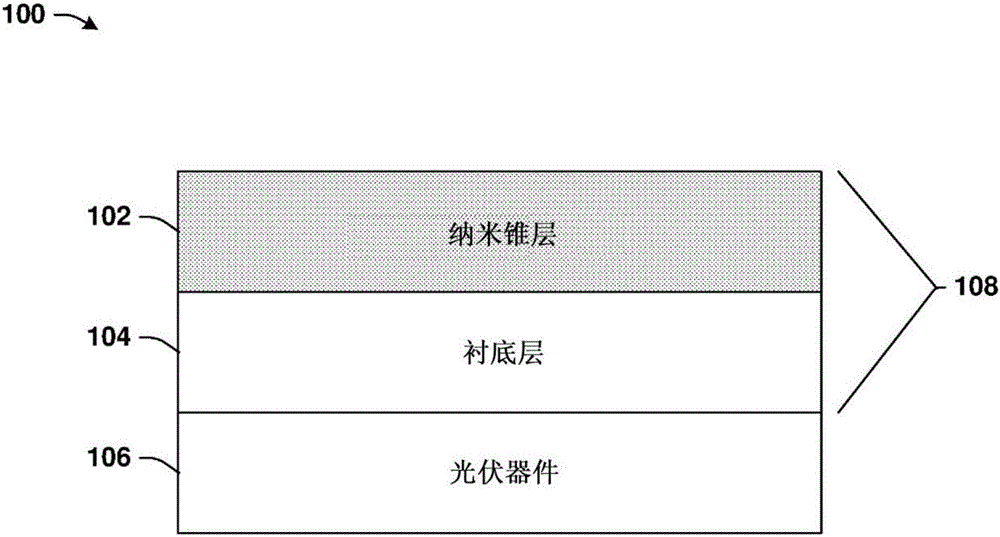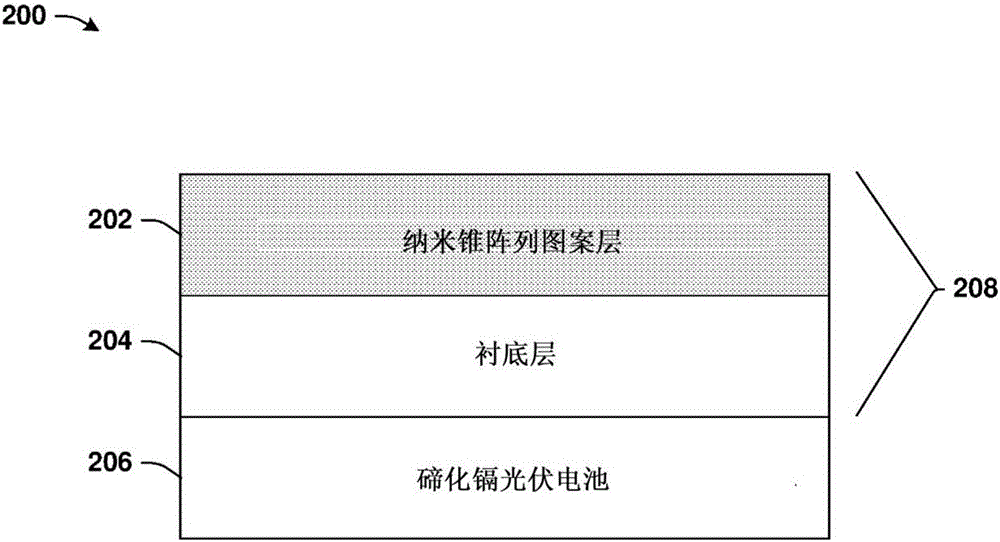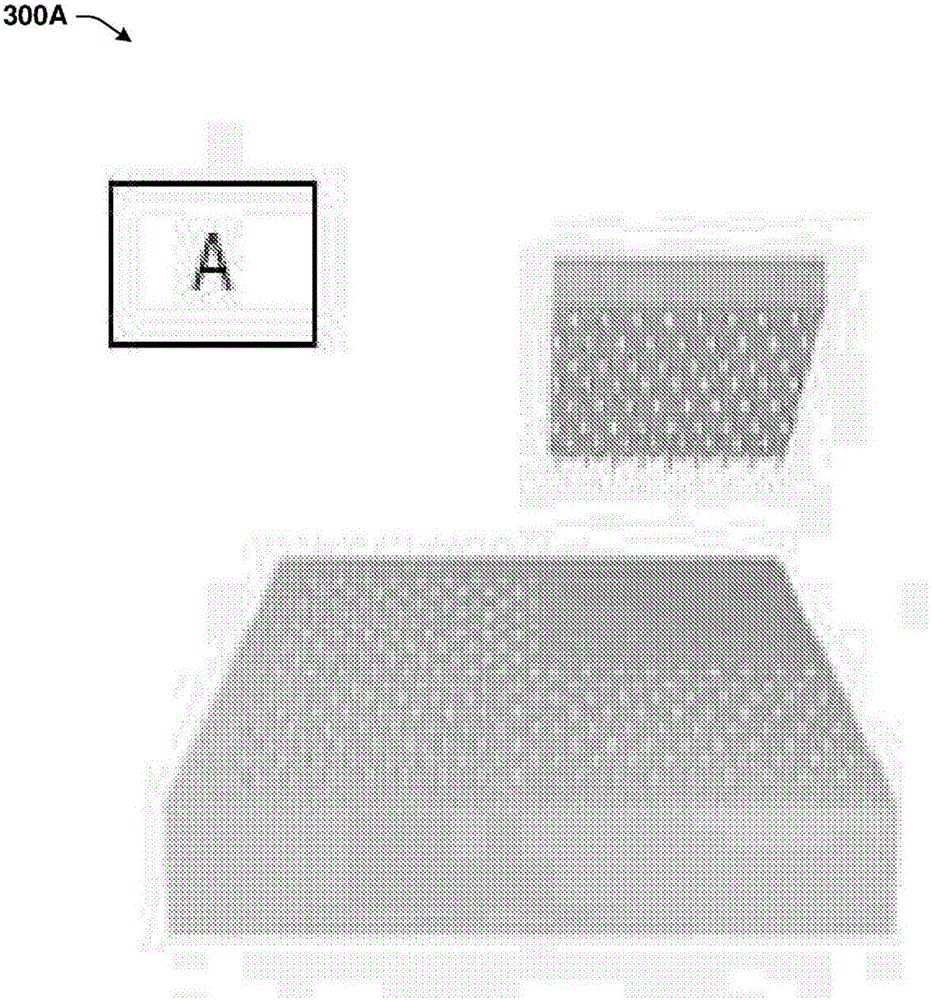Three dimensional anti-reflection nanocone film
A nano-cone and anti-reflection technology, applied in photovoltaic power generation, instruments, electrical components, etc., can solve problems such as high production costs, accumulation of surface debris, suppression control and precision
- Summary
- Abstract
- Description
- Claims
- Application Information
AI Technical Summary
Problems solved by technology
Method used
Image
Examples
Embodiment Construction
[0029] A flexible nanocone membrane device is provided to enhance the ability of a photovoltaic cell to absorb light. Also provided are methods of making flexible nanocone membranes. Recently, photovoltaic cells (also known as solar cells) have gained popularity around the world as a form of alternative energy. Photovoltaic cells are used as a means of converting sunlight directly into electricity and are often a cheaper energy source for consumers and a viable alternative to burning fossil fuels for electricity generation. Given the increasing popularity of photovoltaic cells, there is a need to increase the effectiveness of their ability to convert sunlight into electricity, reduce the costs associated with making more efficient devices, and improve their overall performance.
[0030] Disclosed herein are three-dimensional flexible nanomembranes comprising nanostructures which, due to the large surface area and three-dimensional structure, have anti-reflection properties, f...
PUM
 Login to View More
Login to View More Abstract
Description
Claims
Application Information
 Login to View More
Login to View More - R&D
- Intellectual Property
- Life Sciences
- Materials
- Tech Scout
- Unparalleled Data Quality
- Higher Quality Content
- 60% Fewer Hallucinations
Browse by: Latest US Patents, China's latest patents, Technical Efficacy Thesaurus, Application Domain, Technology Topic, Popular Technical Reports.
© 2025 PatSnap. All rights reserved.Legal|Privacy policy|Modern Slavery Act Transparency Statement|Sitemap|About US| Contact US: help@patsnap.com



